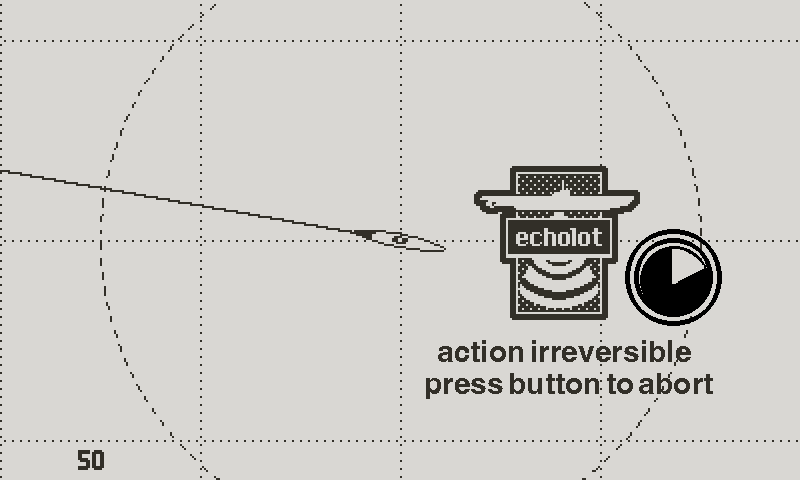Thank you for the great post! What a joy to start the saturday morning with!
The way to change course and speed looks really intuitive!
I imagine making the line that indicates the path to the future position curved would give another visible hint to what the player is doing even if the point of origin is not visible.
On the other hand it's less realistic as you would project the course on the map with a ruler.
As to the echolot confirmation dialog: As I understood you wont use the echolot very often so if it's a bit disruptive it would be very rare.
Another way could be to delay the action for 3 seconds in which you have to keep the button pressed. During this 3 seconds a sound could be played (some click sounds as the operator is turning a knob) and after the 3 seconds you hear the ping. It could be accompanied by a time indicator (shrinking circle or something like that), the warning text could be flashing, etc.:

As to expose the statistics: Sometimes its difficult for the player to learn what works and what not (I remember when I was about 13 years old playing a pirated copy of Silent Service on a monochrome Atari ST with very little knowledge of english). If you see the numbers there is no ambiguity.
So it could be an Idea to have a settings for difficulty (novice vs. captain) where in easy-mode there is an additional info (e.g. chance of detection: 20%, chance of torpedo hit: 30%), not to expose all data but some key-values that would train the player to associate the conditions depicted in bridge view (weather, lighting, ...) with chances of success of different actions. Or it is just used in the first tutorial mission, that would prevent that the game becomes a board game but speeds up the learning the conditions.
Thank you again! I think I will fire up the emulator and give Silent Service another shot.

